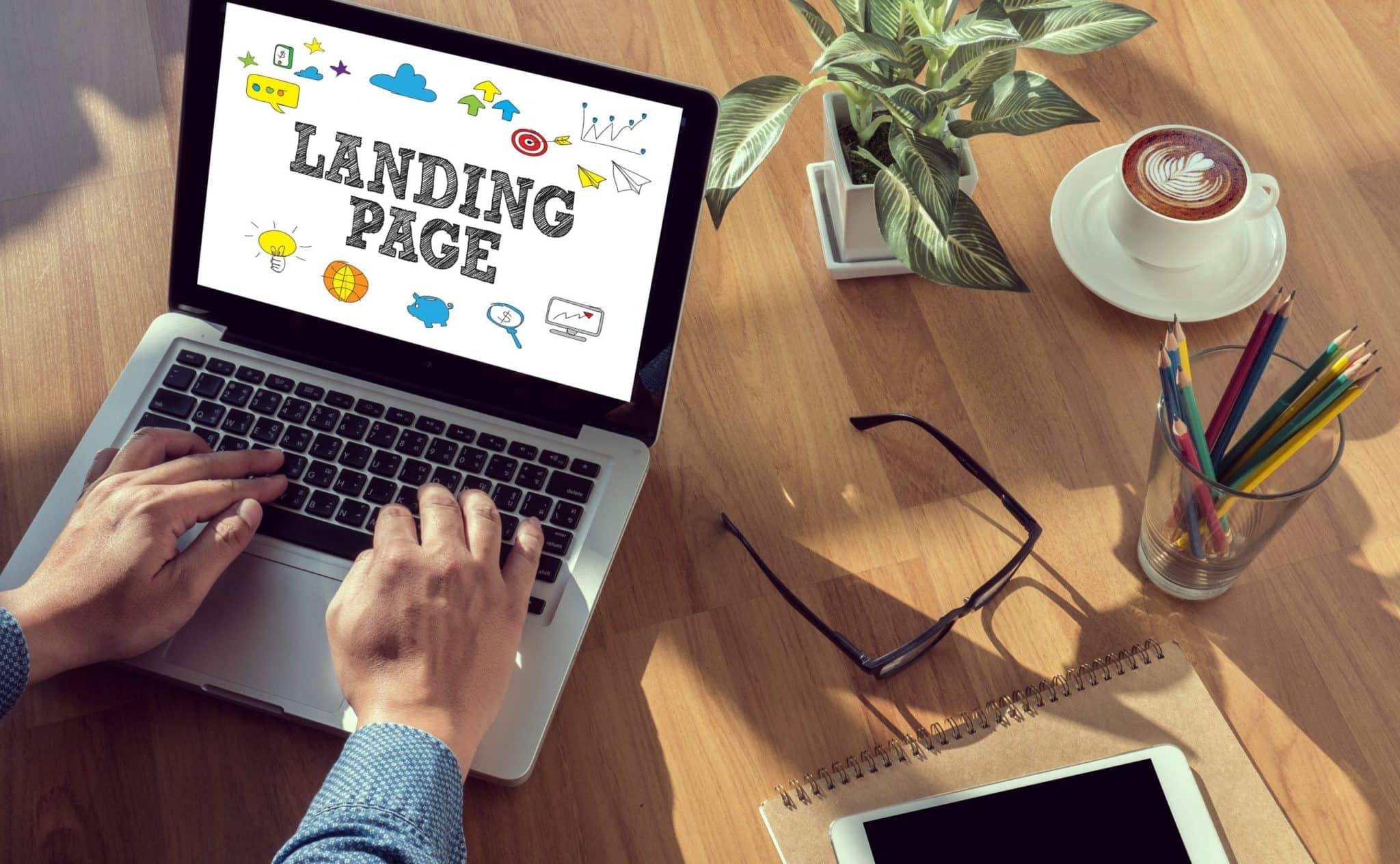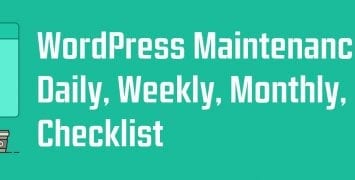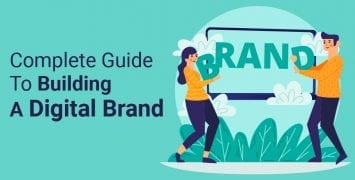Having the perfect local landing page for your small business can provide you with a strategic marketing boost over the competition. To quickly review, the landing page basically guides your target consumers to the desired result. These results tend to be increases in click through rates (To a website or purchasing page) or customer data gathered for lead generation (If you are a B2B operation). A Landing page is a great tool to improve conversions. However, if you are starting from scratch, a Landing page alone will not cut it. In addition to your landing page, you must first build the foundation with SEO and an optimized Google + business page. Today we will focus on how to build a local landing page for small businesses with 2 goals in mind; one is to rank in Google’s local results & two, create an effective landing page for consumers.
Basic Must Haves –SEO Groundwork
Before we touch the design of your landing page, it is important to note the role that SEO plays in the success of your page. Having your page fully and fairly optimized will allow it to rank within the top 7 if not at the top of Google’s local business rankings. According to MOZ’s local search ranking factors, On-page signals such as target Keywords in your titles/URL and a consistent NAP on directories throughout the internet have the most weight in terms of how Google ranks a site. The following are areas you can manipulate towards your success.
1. Keyword Focus
When performing your keyword research (Link to 80 proof digital blog: Keyword guide) you would want to aim for short-tail keywords for your landing page title. While being mindful of your consumer, they will likely search for a combination of keywords that include the formula (Service + Location) or vice versa. The introduction of voice-activated search has further proven this fact as the mobile voice study found that 40% of users ask for directions. In need of a nearby coffee shop, after reading this post? Ask SIRI for “Coffee shops, Near Me” or “Coffee Toronto” and local businesses will appear. Short tail keywords in your URL or titles will allow your landing page to become visible in a customer search. Thus it is also key to note that competitors within the same market/ service will rank for these keywords locally as well. The next steps will help you gain an edge and rank higher locally.
2. Citations/ NAP (Name Address Phone)
A NAP isn’t something to sleep on, it is in fact how Google will parse and display your business contact info in the local rankings. Quantity, quality, and consistency are key to having Google recognize your business within a location. Having citations on many quality directories with a high page authority (Yellow pages, Yelp, etc.) is nice but that’s only 2/3rds of the battle. Citations will have no effect on your local rankings without consistency. It is important to check if all your citations have the exact same NAP down to the very last character. For more on citations check out this guide!
3. Schema Markup
Applying a schema markup to your landing page’s HTML code is highly beneficial. Schema markup allows for search engines to interpret your site data in a more visually appealing manner. Data could include; reviews, upcoming events, product prices and more consumer appealing info, which would entice the urge to click.
As we see here, Schema Mark-up allows for the review data extracted from the page to be displayed
Optimization of a Google + Profile Page
Continuing on the topic of groundwork, a fully optimized Google page is key increasing your landing page’s local SEO ranking. You should connect your landing page/website to your Google + page. Google likes to see that your Google + account is connected to a landing page/business as it further recognizes its existence via the NAP and content.
1. Create a profile on Google + and Google My Business ( Local Listing)
If you have already done so, congrats move on to the next step! If not, no worries, proceed with the initial setup with these tips in mind.
- Name: For your business name, use your “Trade name “name relative to your legal operation name. It is easier to use consistently in your NAP and simple for your consumers to pick up. Imagine if Nike (Trade name), utilized their legal name Nike Incorporated, simplicity is key.
- Address: Make sure the address is an exact match with the address you will put/have on your landing page and online directories. This address will also allow Google to determine your location (Pin Drop) on the local rankings maps.
- Phone Number: Use a local phone number and as the name and address, keep it consistent. Avoid using toll-free numbers here if you can.
- Hours of Operation: List your business’ hours of operation as presented on your website.
- About Section: Fill up your about section with as much relevant content as possible. This area yields a great opportunity for you to include links to internal pages on your business’ website and your target keywords.
- Images: Add at least 10 relevant images if possible. These images can be company logos, staff photos, testimonials, infographics, and promotions. Images build trust within a customer to proceed with a service while making your profile appear active.
- Reviews: Aim for at least 5 reviews for your star rating to appear for your listing, aim for 10- 20 long term. Also, aim for reviews on third-party review websites and directories. It has been known that 70% of consumers create decisions that may lead to conversions based on reviews. These reviews add to reliability and should definitely show up on your landing page as links or images.
Here, I searched for “Toronto Sneakers”, we see a local sneaker shop with their reviews in the link description thanks to Google +
2. Select a Google Business Category (Select a max of 3)
- When selecting your category make sure it fits within your niche market, is dead on relevant and represents your service.
- If you’re having difficulty deciding, performing a Google Keyword search can help you choose based on which keywords are searched locally based on search volume.
Successfully optimizing your Google + page will also touch upon other overall ranking factors (from the MOZ study) which will help your business rank locally through your landing page.
Landing Page Optimization
Once your Google + page is taken care of, we can begin optimizing your perfect local landing page!
Let’s take a brief look at some key areas to consider during the landing page optimization process
Optimize : Title ,Description tags & URL
- Meta Title: Include your keyword(s), location, address & brand name in the Meta title
- Meta Description: include your keyword(s), location, phone number, sales pitch & brand. ***Note***: Keywords will have no direct impact on the google rankings but they are bolded when a user initiates a search for them making your link appear more appealing to the user.
- URL: Including Keyword(s) and location terms, for your small business landing page, allows Google to recognize your page in helping it to rank locally.
In Google’s eyes,
“WWW. Example.Com/Yonge St/Toronto/Landingpage” looks much more appealing than “WWW.Example.com/Landingpage/989879807”.
- Schema Markup
- As we have touched upon before, applying a schema markup allows search engines (Especially Google) to analyze and display content in your search link.
- Content Optimization
- On your initial landing page have at least 400 words in your about section.
- Apply your keywords in this section, and if you’ve found quality mid or long-tail keywords relating to your venture
- Make the content as locally relevant as possible by mentioning places of interest, local events and stories where relevant. *** Note*** if you are ranking locally for multiple locations, it is highly beneficial to change your content based on the location (Just for authenticity).
- Image Optimization
- For the visual elements apply the keywords to the image file name. This will allow your images to appear in image search results and assist with your local SEO efforts. For more info check out this guide (Bruce Clay).
- Reviews
- Reviews & Testimonials originating from your site and high quality third party sources (Such as Google +, Yelp, etc.) all you gain the trust of your consumer. Reviews also create fresh and relevant content for your website as well as to interact with your consumer base. Thus it is beneficial to encourage users to leave reviews. This a must have for local business landing page.
- Internal Cross Links
- If your small business has multiple locations, add internal cross-links to your landing page.
The Landing Page
We’ve laid the groundwork; all that is left is constructing the anatomy of your landing page. This landing page format was specifically created for a local small business venture and of course, would differ for an enterprise venture. So let’s begin to dissect the anatomy of the page from the top.
Section A: The Top
The top of your landing page is the first impression you will make. The image above simulates your initial landing page. It spans from the top to below the trust enhancer section. It is important that you have the following information and features in this area:
- Call to Action, the #1 required element in which this whole page is based around. In this case, it is a signup form for a free quote. This where you want your customers to engage with an action that will lead to a conversion. Check out this color guide for info on color choices that could further attract your customers to take action.
- Google map with your location pinned down
- Company Name, Address, and Phone Number
- Hours of Operation
- Clean and attractive banners displaying the desired action.
- Internal Links to your website such as the Home page, About, Services and etc. for quick access like a dashboard.
- Trust enhancers- these can short positive quotes from customers relevant to the service, logos of past clients or anything relevant to the customer experience.
As you may notice as well, the page title contains the city name, service name, and address as well as the URL. All of which we have taken care of earlier in the landing page optimization process.
The idea is to have your most important information where it is easily accessible for the customer/user, as they would not have to scroll below to find it. Draw you’re your customer in with an informational yet clean first impression so they will scroll below to access the rest of your content.
Section B
Below your initial landing page include the following:
- About Section – Write a short, captivating, and relevant piece about your business and the service you offer. Around 400 words would suffice and make sure to include your keywords from your research.
- Staff / business related photos – continue enhancing the trust of your customers with staff pictures so they know the faces behind the business. Pictures of promos, the company logo, and visual examples (if available) of the services you offer can be placed here as well. You can also use this as an opportunity to provide a quick virtual tour of the office space or location.
- Testimonials – Display positive testimonials from customers. Not only is this a trust-enhancing device but it also provides your page with fresh content.
- Links / Opportunities to review – Make it easy for your customers to leave reviews and also have them review on multiple high-quality review sites. Reviews from multiple well-trusted sources have increased conversions by 30% and also helps to legitimize the reviews.
- Multiple Locations: If you have multiple locations within your city, make sure to display the NAP for all of them. If you also have multiple locations in other cities, provide links to their respective landing pages.
Section C
At this point, your customer should already be enticed to interact with your page thanks to the placement of all the info. Here is where you provide the customer with options to go ahead with your desired conversion (purchase, registration, etc.) or provide more info via links to answer any outstanding questions they may have not had answered from the landing page.
- Provide another set of internal links to your company website like the dashboard menu in section A. This will give your customers a second chance to access your website after sifting through your landing page.
- Post links to the services you offer where they can get more info.
- Post links to other locations’ landing pages or their addresses
- Post links to blog posts if they would like to read more on industry-related content,
- Provide social media links
- Post a Call To Action – Just to save your customer from scrolling back up to the top of your landing page, posting your CTA at the bottom adds to accessibility.
Strategically placing these elements at the bottom of your page will better prevent your customer from bouncing, as your customer’s journey is not left with a dead end.
Use this guide as a benchmark. Like all topics and procedures in SEO, nothing is set in stone so it is important to test minor variations to adapt to trends if you see fit. Keep testing new features that you may add to your local landing page and you may come up with a tailored plan for your small business!
In conclusion, having a landing page is highly beneficial if done correctly from the bottom up. It is not as daunting as a task as it should be and your local SEO rankings and potentially your conversions will return results.




